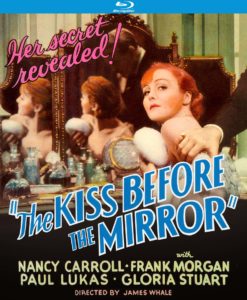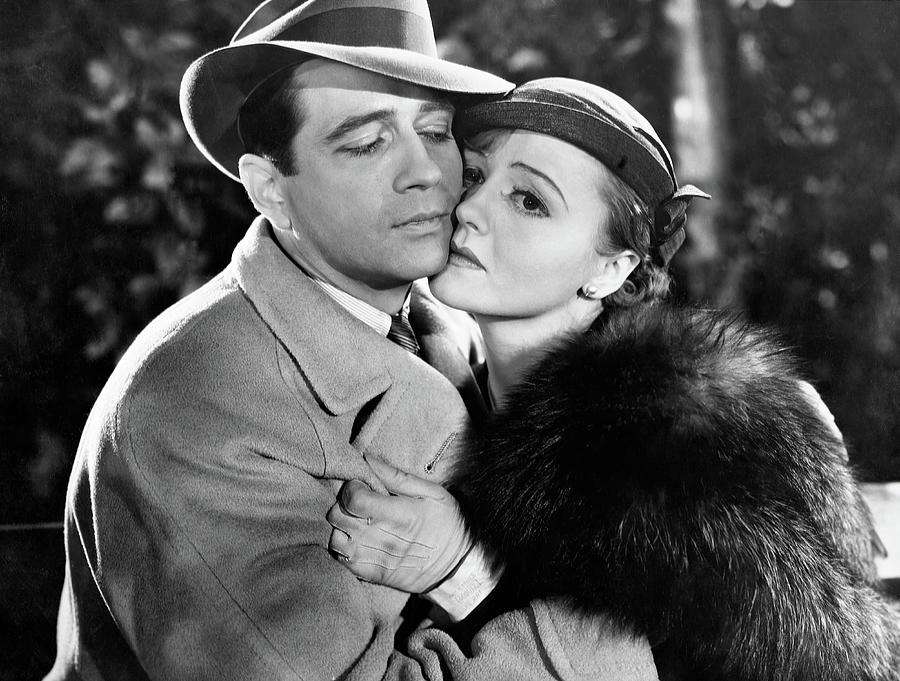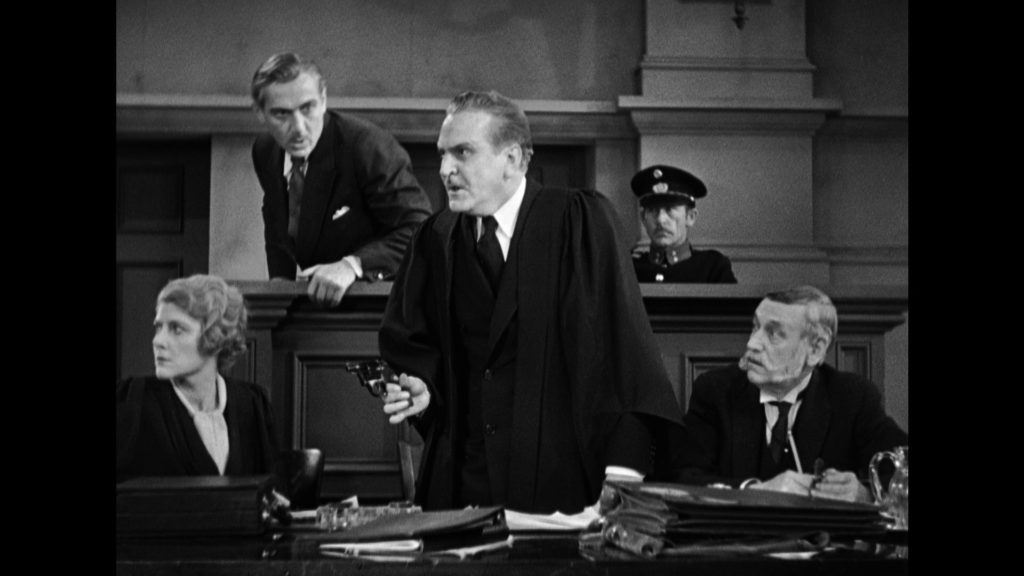Director James Whale and D.P. Karl Freund Give a Short but Obsessive Reflection on Infidelity.
DIRECTED BY JAMES WHALE/1933
BLU-RAY STREET DATE: FEBRUARY 2, 2021

As some might say, when movies were movies, they bore a sophistication and, in some cases, a casual elegance, that’s been left to yesteryear. James Whale, when he wasn’t making blockbusters set in gothic castles and old dark houses, was one of the directors who made such sophistication look easy.
Also, in the pre-code era, Hollywood films enjoyed a far greater latitude for reflecting society’s ills and unpleasantries back on moviegoers. Grown-up topics such as cheating spouses, homosexuality, and murder without remorse were just a few of the subjects that would be branded verboten when the Hays Code ratcheted up enforcement in 1933.
Again, this suited Whale, who was an openly gay and worldly man of particular tastes. Weaving yarns of fallible protagonists as opposed to unblemished do-gooders would always be his forte. “Tampering in God’s domain” wasn’t so much sacrilege as ego run amok. In his seminal hit Frankenstein (1930), the title doctor believes that he can create new life and is made to witness the provincial consequences of his of his hubris. (A climax greatly altered from that of Mary Shelley’s novel). In his non-horror legal thriller The Kiss Before the Mirror, marital infidelity gives was to murder- and the Vienna criminal justice system is challenged in what should be an open-and-closed case.
It could be argued that this is Whale exercising his momentary directorial clout to ask, “What is wrong with people??” Many of the Great Directors, as they were able, have devoted swaths of their careers to this question. (Kubrick, Kiarostami, Hitchcock, De Palma, et al). In The Kiss Before the Mirror, Whale introduces the character of Dr. Paul Held (The Wizard of Oz’s Frank Morgan) as an upright and respectable legal professional. Held is saddled with the task of defending in the court of law a man who’s confessed to murdering his own wife. (Paul Lukas is the husband, shown fatally shooting her multiple times as she disrobes by her waiting lover’s bedside. Gloria Stuart and Walter Pidgeon portray the illicit couple in extended cameos). For Held, It’s the kind of unenvious task that seems to come along every now and again, but he takes it in stride. That is, until he learns that his own wife (Nancy Carroll, as beautiful as she is freaked out by the end) has a lover on the side.

Rather quickly, burning jealousy and angry obsession take Held from affable professional to unhinged schemer. The shift is marked most curiously. In this film, there are two distinct acting styles at play. The first, a high class affect oozing with theatrical artifice, is adopted most notably by Stuart and Pidgeon as the philandering couple. Their film-opening performances, set in a grandiose estate of billowing shears and silk robes, is a misleading stylistic rabbit trail, to be sure.
Whale sharply contrasts their humorless stage-like affectations when Held and his fellow workaday legal professionals are introduced. Theirs is a back-slapping run-of-the-mill patter imbued with quick wit and sarcasm. (Particularly evident in the wonderful supporting performances by a wry Jean Dixon and Morgan’s fellow Wizard of Oz actor, Charley Grapewin). But when Held arrives to the realization of his wife’s cheating, his demeanor suddenly shifts to the former- pent up, deliberate, and rife with over-enunciation. It’s no coincidence that this transformation occurs as his wife beautifies herself at her own ornate make-up table, replete with several mirrors. The significance of the mirrors, tipped off in the film’s title, reflect the multiple faces one might have in a relationship.
On hand to photograph these many reflective shots in all their beguiling intentionality is German cinema expressionist extraordinaire, Karl Freund (Fritz Lang’s Metropolis; Tod Browning’s Dracula). Freund and Whale prove to be a winning combination, their collaborative ambiance nudging The Kiss Before the Mirror beyond the level of mere melodramatic thriller. From the opening shots, it’s obvious that this is going to be something of a sumptuous treat. The remainder of the very brief film (only a taut sixty-nine minutes) does not disappoint.
Film buffs who only know of James Whale from his horror titles (including The Old Dark House, The Invisible Man, and The Bride of Frankenstein) would do well to check out The Kiss Before the Mirror. While similar in its warped morality, it is in some ways a formal step beyond anything so concrete. The same could be said for star Frank Morgan, who’s increasingly murderous public defender, driven by a festering mania, couldn’t be further from his portrayal of the wonderful Wizard of Oz.

Now, thanks to Kino Lorber Studio Classics, fans can pour over this film to their hearts’ content. The high-definition Blu-ray format is particularly suited for a lavishly lurid and visually precise title such as this. Film Historian Alexandra Heller-Nicholas provides a terrific audio commentary track, detailing the key players both on and off screen as well as broaching the subject of some of Whale’s more subversive inferences embedded herein.
James Whale’s directorial career was something of a whirlwind, netting twenty films in only eleven years, beginning to end. (His first film is called Journey’s End. How’s that for at-a-glance subversion?) This being only the sixth of those finds a filmmaker most confident and unafraid to commit to potentially risky decisions in terms of performance and morality.
Soon enough, the pre-code era would be behind Whale, as would be his most celebrated work. Five years on, he would remake The Kiss Before the Mirror as 1938’s Wives Under Suspicion, a film that is said to put aside the 1933 film’s moral ambiguity for cut-and-dried Hays Office approval. By the end of 1941, Whale would kiss moviemaking goodbye. Thankfully, his legacy is relatively sturdy. Here’s hoping that the near future will yield more of Whale’s lesser-known titles by way of shiny, reflective physical media.

